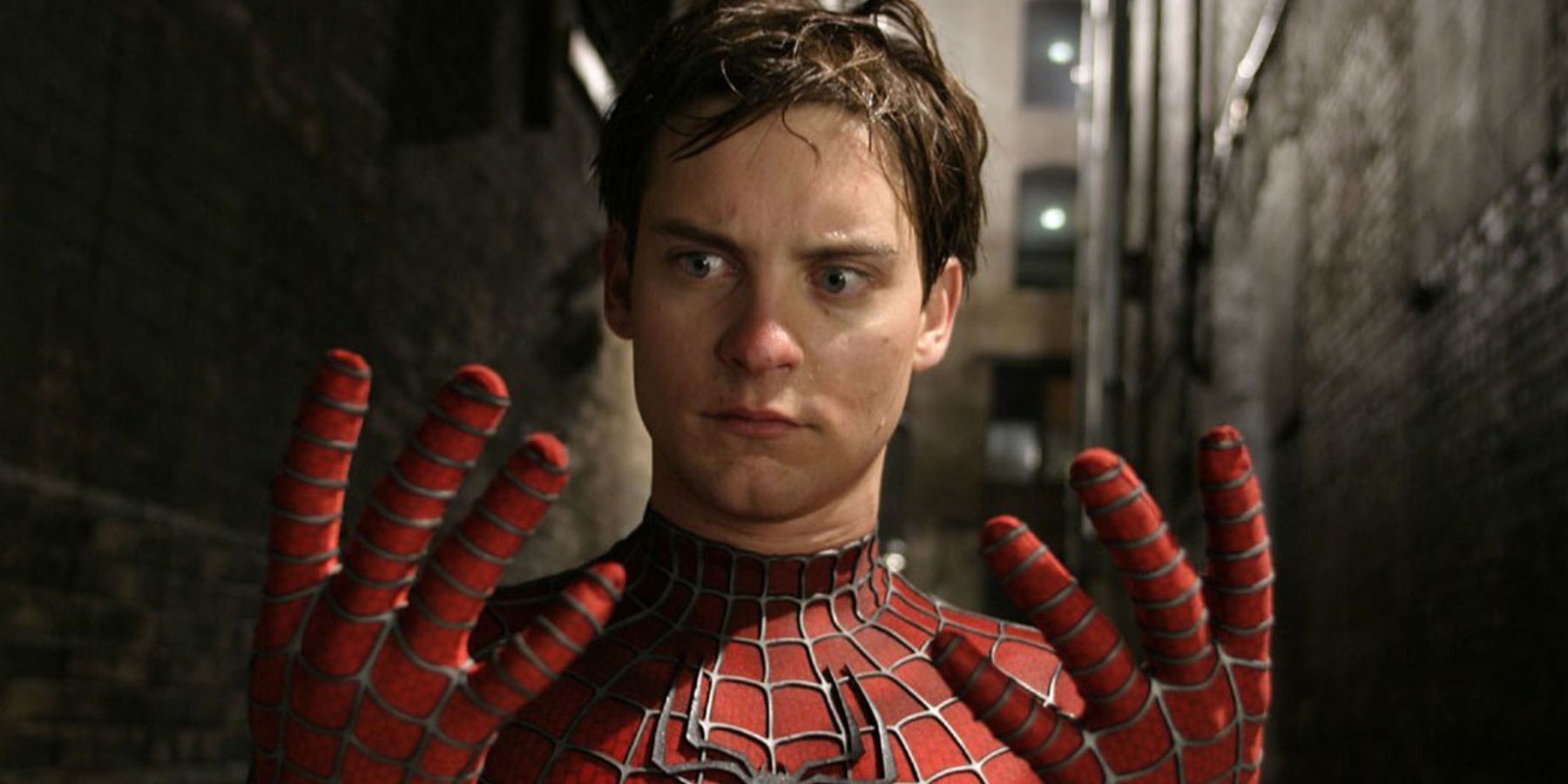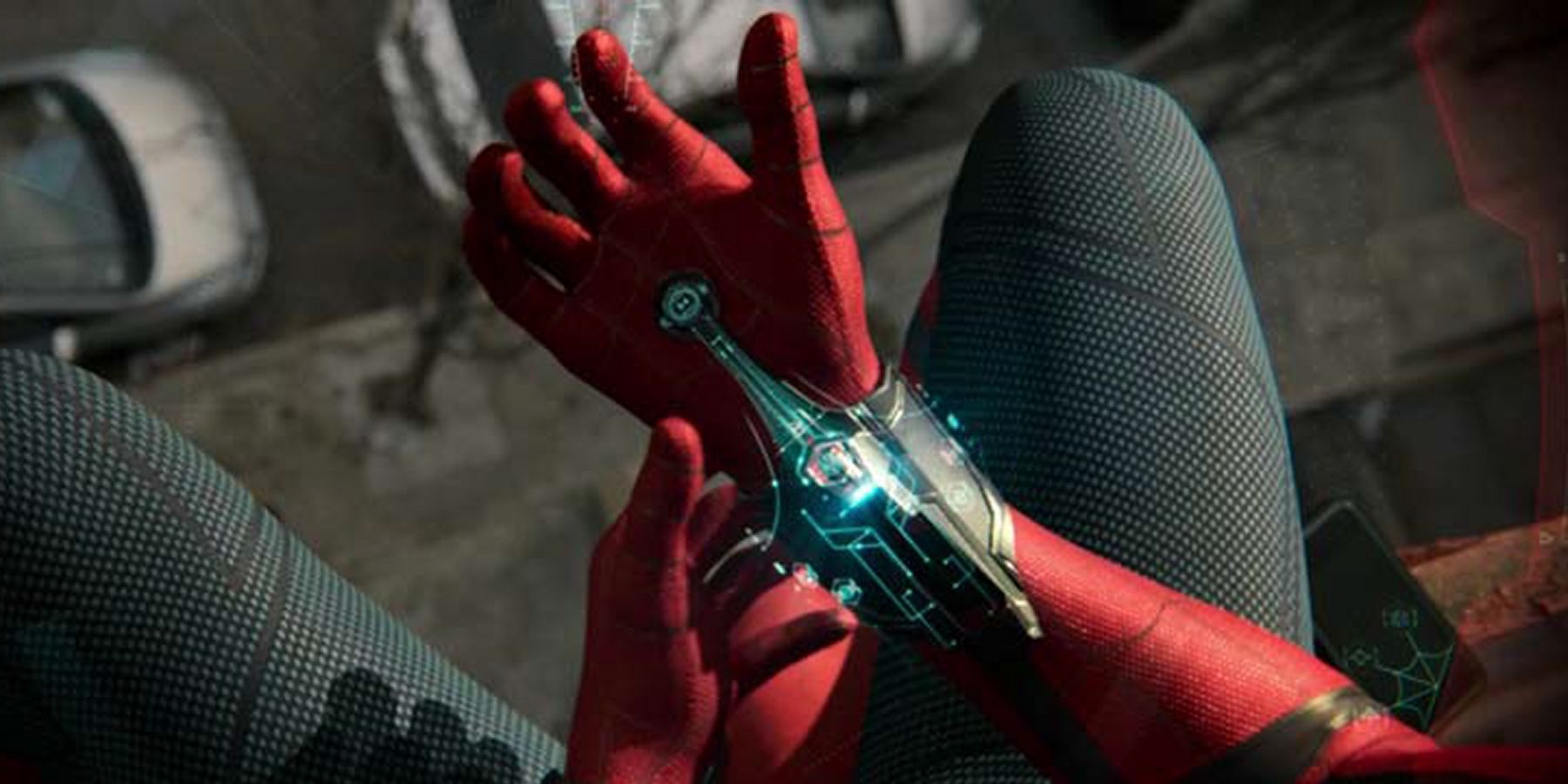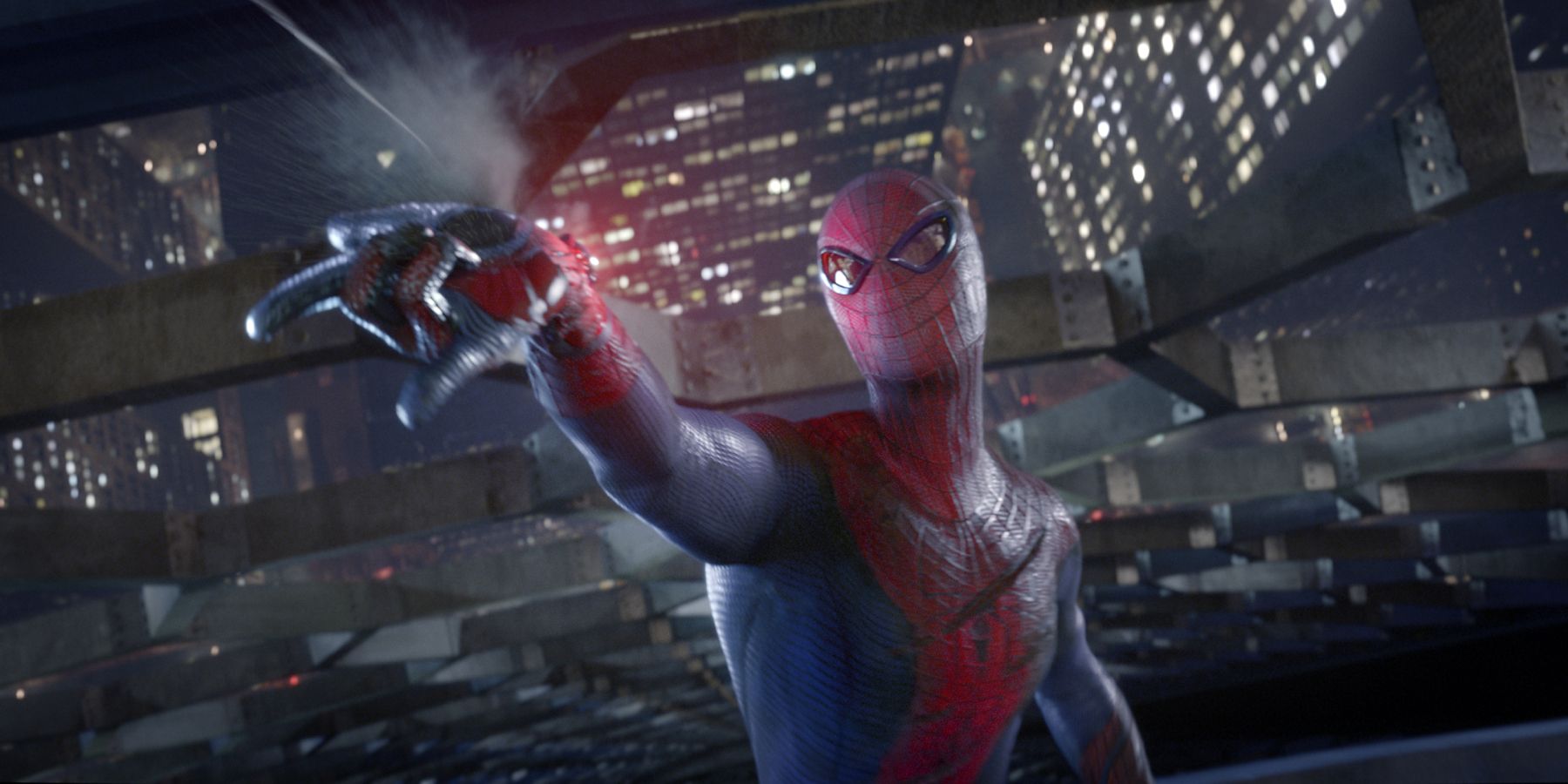In the last 20 years, audiences have been treated to not one but three versions of Spider-Man. Each adaptation — each led by a different director — bring their own unique flair to the story of the web-slinger. Each trilogy has had its own take on the costumes and origin story, going from extremely grounded in The Amazing Spider-Man to Tom Holland’s Spider-Suit courtesy of Tony Stark. But only one film series has strayed from the unspoken rule of Spider-Man’s look — the web-slingers themselves.
Both The Amazing Spider-Man and the MCU’s Spider-Man have their respective Peter Parkers create devices that allow them to shoot webs to swing across landings and even whole cities. The two films dedicate their own montages to the creation of the shooters, which look like complicated bracelets on each wrist that release webs at the flick of a wrist. But the first modern live-action Spider-Man films — directed by Evil Dead creator Sam Raimi — included a version of Peter Parker without a web device. Instead, Peter Parker (played by Tobey Maguire in the original trilogy) possessed the power to create webs himself, which shot out from his wrist.
This choice was a risk back in 2002 when Spider-Man was first released. Mechanical web shooters are how Peter Parker whips around New York in the original Marvel comics, complete with an edition dedicated to their creation. But when it comes to film adaptations, fans should know that nothing is sacred until it is made canon on screen. But why change Peter's abilities? Spider-Man’s creative team had a reason that looking back after almost 20 years, makes a lot of sense.
Before Sam Raimi (who will be returning to superhero films with the upcoming Doctor Strange in the Multiverse of Madness) was named director of Spider-Man, the project was in talks to be helmed by Terminator and Avatar director James Cameron. In Cameron’s original treatment for a potential Spider-Man film, Peter Parker gained powers from a radioactive spider bite that fans of the comics were used to — crawling on walls, incredible speed, and an innate spidey-sense — but added that he could shoot organic webs out of his wrists, getting rid of the web-shooters entirely. The reason? If Peter Parker’s bite leads him to climb like a spider naturally does, what’s the harm in having him create his own webbing like a spider? Eventually, Cameron left the project and Raimi took over but kept the idea of organic web-shooters.
Organic webs did allow Raimi’s Spider-Man an element that becomes more and more sparse with each new adaptation — silly comedy. After learning of his initial powers, Tobey Maguire’s Peter Parker is allowed to fail (many ridiculous times) at pulling a web out of his wrist. He finally gets the hang of it, only to be unable to stop swinging and faceplanting into a billboard. While The Amazing Spider-Man and the MCU’s Spider-Man have a few scenes of Peter understanding his abilities, but never get to go as far as Raimi’s first trilogy did.
So why go back to the comic book's mechanical webs? The answer just may be in the timing. The Amazing Spider-Man and the first of the MCU’s Spider-Man films were released in 2012 and 2017, respectively. Both were created after the release and acclaim of The Dark Knight trilogy, Christopher Nolan’s dark take on Batman and Gotham City. The films were praised not only for the performances of Christian Bale and of course, Heath Ledger but also for their realistic portrayal of a superhero, taking on a more dreary tone than the comic book films that came before it. After The Dark Knight, directors of superhero films took a more modern approach, getting rid of some elements of characters that make them a little campy, canon or not. Perhaps the directors of The Amazing Spider-Man and MCU’s Spider-Man followed the trend set by Nolan and opted for more realism in their adaptation of Peter Parker. And the results so far have been great.
While Andrew Garfield’s Peter Parker has a mixed reputation, it brought the character to deeper places and gave fans a live-action Gwen Stacey (Emma Stone.) The MCU’s Spider-Man films have turned Tom Holland into a superstar and given on-screen adaptations to villains like Mysterio. That’s not even mentioning the multiversal, star-studded event Spider-Man: No Way Home is shaping up to be, with villains from Sam Raimi’s Spider-Man returning like Dr. Octopus (Alfred Molina) and The Green Goblin (Willem Dafoe.) It’s still unknown if Tobey Maguire and Andrew Garfield will be returning as their respective Peter Parkers, but fans sure are hoping. Regardless, it’s still interesting how something as simple as a web-slinger can change a character like Spider-Man.



